General
The Essex County Hospital opened in 1938 in a building originally erected in 1861 as the Merchant Seamen's Orphan Asylum. (Prince Albert, the husband of Queen Victoria, had laid the foundation stone.) In 1921 the orphans moved to Bearwood House in Wokingham and the Asylum building was bought by the Convent of the Good Shepherd as a refuge for women and girls. In 1937 Essex County Council bought the building and converted it into a hospital.
The Hospital joined the NHS in 1948 as a general hospital with 202 beds. It had suffered considerable damage during the war and a proposal was made to develop a larger hospital on the 7 acre site.
However, these plans came to naught. The war damage was repaired and by 1961 the Hospital had 195 beds.
The maternity service was withdrawn in 1975 and the Hospital finally closed in 1986 with 188 beds. Services were transferred to Whipps Cross Hospital.
Present status (January 2008)
The site - in the shape of an irregular pentagon - has been redeveloped. In 1996 the Grade II* listed Venetian Gothic buildings were converted into apartments. The Hospital campus is now 'Clock Court' named after the Hospital's clock tower, which is a well-known local landmark.
The original relief carvings by Thomas Earp (1828-1893), an eminent Victorian sculptor and stonemason, can be seen throughout the buildings (Earp was the sculptor of the Eleanor Cross outside Charing Cross Station). A maritime theme had been chosen as the decoration: a shipwreck is depicted over the main doorway (appropriate for the Merchant Seamen's Orphan Asylum) and motifs of ships' ropes and rigging can be found on the cornices and the lintels and sills of the windows.
The chapel, built in the same style as the Hospital, was paid for entirely by Lady Morrison of Snaresbrook and opened in 1863. When the Hospital closed, the chapel lay empty until it was purchased by the Buckhurst Hill Reform Synagogue in 1995. Now completely refurbished, the Grade II* listed building contains fixtures and fittings from the former Jewish Hospital and Home in Tottenham, and has been named the Sukkat Shalom Reform Synagogue.The site also contains a rehabilitation centre and a mental health care day centre. A proposed scheme for a new £7.9m Wanstead Health Centre was not carried out due to lack of consensus.
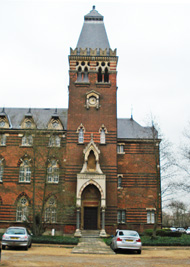
The front of the main block with its clock tower.
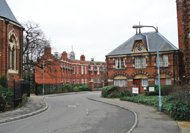
Looking up Whiting Road, the former chapel is on the left, the main block is just seen on the right, and redeveloped buildings are straight ahead.
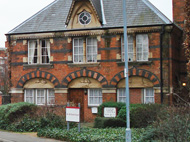
No. 45-55 Clock Court retains the decorative details above the windows.
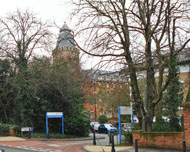
The entry from Hermon Hill to Makepeace Road.
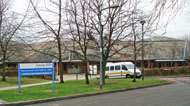

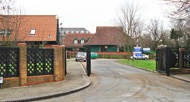
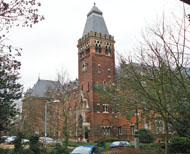
The main block with the tower at one corner.
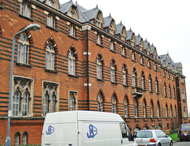
The side of the main block.
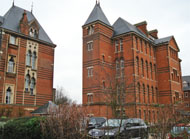
The back of the main block and another ward block beside it.

The stone relief carving of a sailing ship above one of the windows.
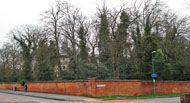
The 48-bedded Heronwood and Galleon Unit for intermediate care and rehabiltation is located in Makepeace Road.
The back of the Heronwood and Galleon Unit in the foreground, with the former Wanstead Hospital buildings in the background.
Mellmead House in Rodney Road is a mental health day hospital.
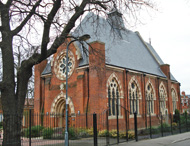
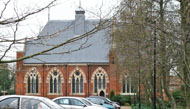
http://exploringeastlondon.co.uk
www.bbc.co.uk
www.british-history.ac.uk
www.guardian-series.co.uk
www.londongardensonline.org.uk
www.tubewalker.com
Return to home page